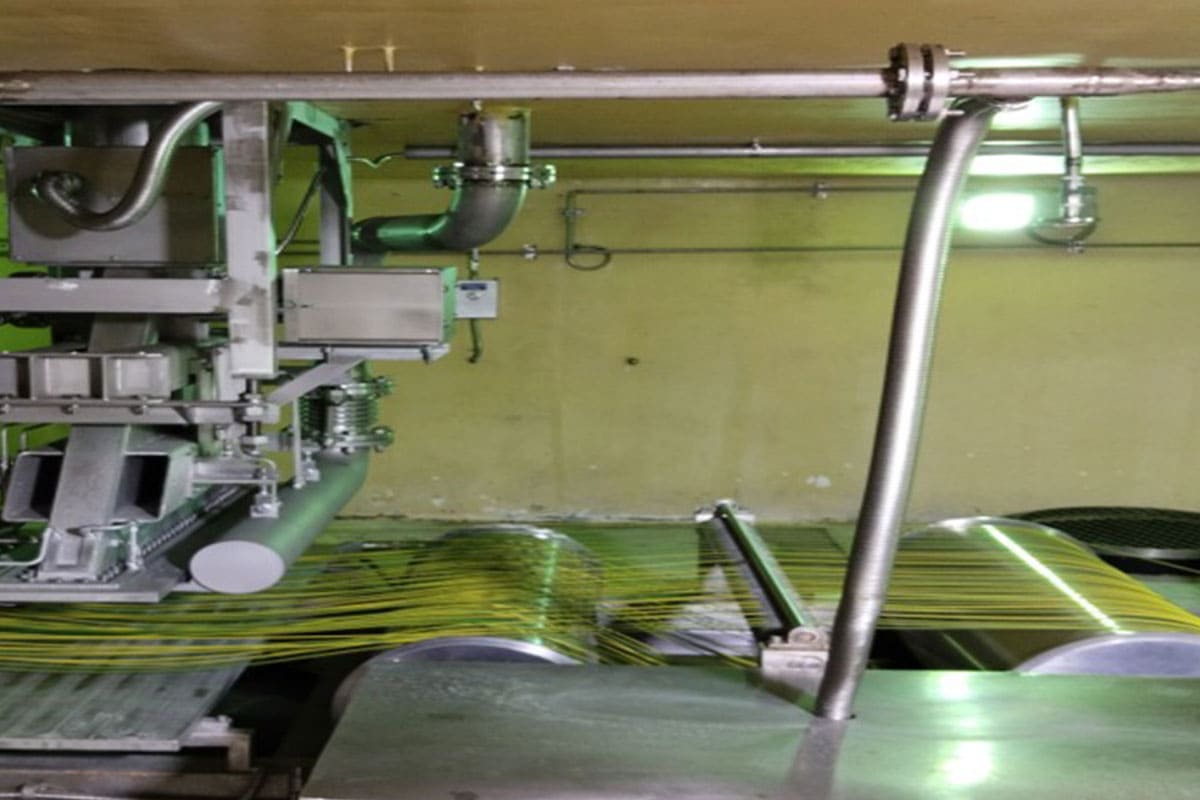Electron Beam Cross-Linking: Making Cables Stronger, Safer, Smarter

When we think of electrical safety in our homes and commercial spaces, we often focus on the appliances or the switches - but the real silent guardian of our safety lies hidden beneath the walls and above the ceilings. We are talking about wires, more specifically, the kind of insulation these wires carry and how they’re engineered can make all the difference between risk and reliability.
One such advanced technology that is shaping the future of safer and more efficient wire is Electron Beam Cross-Linking or EBXL. While many in the industry have heard of it, few truly understand its impact and even fewer realize when it's being used just for show.
EBXL (Electron Beam Cross-Linking) Technology
EBXL (Electron Beam Cross-Linking), is an advanced process where accelerated electrons are directed onto cable insulation material, which modifies the internal structure of cable insulation. These high-speed electrons break the existing polymer chains and re-bond them into a three-dimensional cross-linked network. Imagine turning a soft, plastic ladder into a heat-resistant, rubber bridge which is capable of holding its shape under higher temperatures and mechanical stresses. EBXL technology truly make a wire or cable insulation tougher in terms of its electrical, mechanical, thermal and chemical characteristics. The advantage of EBXL technology includes:
- Increase in operating temperature.
- Higher short circuit temperature rating.
- Improves the mechanical toughness and hence the life of wire.
- Enhances current carrying capacity of the wire.
- Make the insulation all weather ready.
- Improves resistance to chemical, UV and cracking under stress.
Developing EBXL cables is not just about innovation - it demands precision, investment, and cutting-edge infrastructure. The heart of this process lies in a state-of-the-art E-Beam accelerator facility, where high-energy electron beams, often in the range of 1 to 3 MeV, are used to initiate polymer cross-linking. These machines require radiation shielded chambers, robotic handling systems, precise control units, and stringent safety protocols as they work with high voltage and radiation technologies. Unlike conventional methods, cross-linking here happens at the molecular level, in a fraction of a second, without introducing chemical additives.
This technology has already been trusted for years in high-end applications like nuclear plants, aerospace, data centers and railways. But its entry into the house wire and domestic segment is where the narrative takes a sharp turn.
EBXL on PVC insulation - A Dangerous Compromise
In some parts of the market, PVC insulated wires are subjected to Electron Beam Cross-linking technology and promoted as high-tech and high-performance solutions, often with a loud pitch around. This is a classic case of “Half Knowledge, More Dangerous”.
PVC remains PVC, no matter how much you beam it. Polyvinyl Chloride (PVC) by nature is a halogenated material. Even if you cross-link it, it does not eliminate the biggest risks during a fire:
- Thick black smoke that reduces visibility.
- Toxic halogen gases, especially hydrochloric acid, which causes respiratory issues and corrosion.
- Intense flame propagation which is a nightmare in closed spaces like homes, hospitals, and hotels.
Hence such so-called PVC based EBXL wires not only reduces visibility but can also choke people before the flames reach them. So, what’s the point of boosting current capacity if basic fire safety is still missing? Is that what we need in a household wiring? In households, current demand rarely touches maximum limits. But the threat of fire is real, and what matters then is how the wire reacts under fire conditions.
Don’t be fooled by flashy specs. If the base insulation is PVC, even the best tech won’t make it fire safe.
LS0H (HFFR) + EBXL – A Game Changing Combination
To truly unlock the benefits of Electron Beam Cross-Linking, the base insulation must be Halogen-Free, like Low Smoke Zero Halogen (LS0H) or HFFR (Halogen Free Flame Retardant). When EBXL is applied to LS0H-insulated wires, the resulting product is not only high on current ratings and temperature ratings but protects lives and assets during fire. The combination shall ensure that:
- Flame spread is limited.
- Generates negligible smoke during fire.
- Visibility is maintained.
- No acidic or toxic gases are released in case of fire.
- Electrical performance is enhanced over the long run.
It’s this advanced combination that should be the new normal for house wires, especially in today’s world where fire safety is not optional. We all need to realize that the risk isn’t just from flames - it’s from suffocation, disorientation, and delayed evacuation caused by dense smoke and gas. With LS0H-EBXL wires, these risks are significantly eliminated. Hence, wires with this kind of combination should become the standard in all critical infrastructure - from high-rises and hospitals to metros, airports, and schools.
Conclusion
Electron Beam Cross-Linking (EBXL) isn’t just a buzzword, it’s a breakthrough. But its impact depends entirely on the base material. Cross-linking PVC might offer more current capacity, but it ignores the very threat cables should protect us from - fire hazards like toxic smoke and poor visibility.
True safety begins when EBXL meets Halogen-Free materials like LS0H or HFFR. That’s when cables don’t just perform, they protect. For consultants, builders, and homeowners, it’s time to ask the right questions:
- Is the cable fire-safe or just cross-linked?
- Will it help in evacuation or worsen the situation?
- Has this technology been used for safety or just sales?
Because in moments of fire, it’s not about how much current a wire can carry - it’s about whether people can breathe, see, and escape. Let’s move toward safer buildings, smarter choices, and a future powered by responsible use of technology like EBXL - where performance meets purpose.

